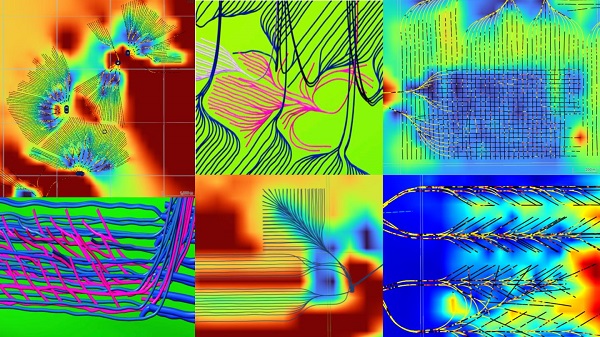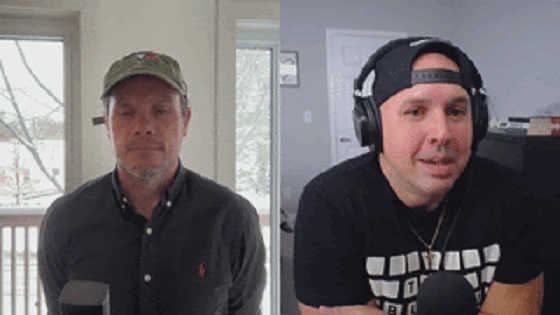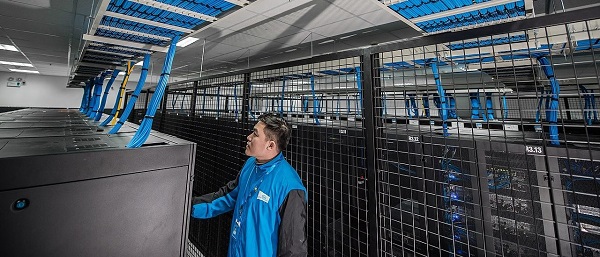Alberta
Alberta going after entrepreneurs and immigrants working as health-care professionals

Improving the Alberta Advantage Immigration Program
Changes to the Alberta Advantage Immigration Program (AAIP) will make it easier for in-demand workers and entrepreneurs to become permanent residents.
Alberta’s economy has momentum, and Alberta’s government is committed to further growth and diversification so the province remains the economic engine of Canada. In 2022, nearly 50,000 people from around the world chose Alberta as the place to invest, work and raise their families.
AAIP is an economic immigration program that enables Alberta to nominate qualified workers in in-demand sectors for permanent residency. By improving the program, Alberta will be more competitive in attracting skilled newcomers from across the world.
“Alberta is a land of opportunity. In our province, you can find the career you want, take home a strong and regular paycheque, and still spend time with family and friends. Not only do people around the world want to come here, we want them to come here to be a part of our communities and our prosperity, and help Alberta continue to grow and succeed.”
Alberta’s government is making five improvements to the AAIP that will help both businesses and international skilled workers.
Changes to the Rural Entrepreneur and Rural Renewal streams will help Alberta’s rural communities remain vibrant and grow. A lowered investment threshold of $100,000 for the Rural Entrepreneur Stream will will open the door to additional qualified entrepreneurs who wish to establish or purchase an existing business in participating rural Alberta communities. Removing the requirement for a letter from a settlement agency under the Rural Renewal Stream will help rural communities attract, recruit and welcome newcomers based on local needs.
“Bringing more workers needed in the province will be key to continuing to grow Alberta’s economy and meeting our labour shortages. These changes to AAIP show our commitment to making Alberta one of the best places in the world to put down roots, contribute positively to your community and be prosperous.”
Alberta has the best front-line health care workers in the world and the province will work to have the right supports in place to ensure Albertans get the care they need when and where they need it. A new, dedicated pathway to attract medical professionals to Alberta means that up to 30 per cent of Alberta’s Express Entry Stream allocation in 2023 will be reserved for health-care professionals with an Alberta job offer from a health-care sector employer and who meet the requirements to work in one of the eligible health occupations.
Two more changes will see a new phone line that directly connects AAIP staff members with clients and collaboration with the federal Economic Mobility Pathways Pilot. Participating in this pilot will help refugees with the skills and qualifications needed in Canada to immigrate through existing economic programs.
“These policy changes are aimed squarely at filling needed skills gaps, boosting vibrancy in rural communities, and creating more economic opportunity for refugees. We applaud these moves to enhance economic immigration in a way that is responsive to specific provincial needs.”
“From HV Global Immigration, we would like to thank Minister Rajan Sawhney for listening and proactively implementing reasonable changes to the AAIP. Apart from the other improvements, change in minimum investment at AAIP’s Rural Entrepreneur Stream would definitely help new and prospective immigrants to qualify for this program. This change will generate more revenue and create jobs for Albertans. Last, but not least, the new information phone line is going to be a big relief. Thanks once again Minister Sawhney for your hard work and listening to our ideas and solutions.”
Quick facts
- Alberta currently has about 100,000 job openings across the province.
- Alberta is forecasting a cumulative job shortage of 33,100 workers by 2025 across several occupations, skill levels and sectors (source: Alberta’s Occupational Outlook, 2021-2030).
- Immigration, Refugees and Citizenship Canada sets AAIP’s annual nomination limits.
- Alberta recently received an increase in nominations:
- 9,750 nominations in 2023
- 10,140 nominations in 2024 (estimated)
- 10,849 nominations in 2025 estimated)
- Alberta recently received an increase in nominations:
Alberta
‘Weird and wonderful’ wells are boosting oil production in Alberta and Saskatchewan

From the Canadian Energy Centre
Multilateral designs lift more energy with a smaller environmental footprint
A “weird and wonderful” drilling innovation in Alberta is helping producers tap more oil and gas at lower cost and with less environmental impact.
With names like fishbone, fan, comb-over and stingray, “multilateral” wells turn a single wellbore from the surface into multiple horizontal legs underground.
“They do look spectacular, and they are making quite a bit of money for small companies, so there’s a lot of interest from investors,” said Calin Dragoie, vice-president of geoscience with Calgary-based Chinook Consulting Services.
Dragoie, who has extensively studied the use of multilateral wells, said the technology takes horizontal drilling — which itself revolutionized oil and gas production — to the next level.
“It’s something that was not invented in Canada, but was perfected here. And it’s something that I think in the next few years will be exported as a technology to other parts of the world,” he said.
Dragoie’s research found that in 2015 less than 10 per cent of metres drilled in Western Canada came from multilateral wells. By last year, that share had climbed to nearly 60 per cent.
Royalty incentives in Alberta have accelerated the trend, and Saskatchewan has introduced similar policy.
Multilaterals first emerged alongside horizontal drilling in the late 1990s and early 2000s, Dragoie said. But today’s multilaterals are longer, more complex and more productive.
The main play is in Alberta’s Marten Hills region, where producers are using multilaterals to produce shallow heavy oil.
Today’s average multilateral has about 7.5 horizontal legs from a single surface location, up from four or six just a few years ago, Dragoie said.
One record-setting well in Alberta drilled by Tamarack Valley Energy in 2023 features 11 legs stretching two miles each, for a total subsurface reach of 33 kilometres — the longest well in Canada.
By accessing large volumes of oil and gas from a single surface pad, multilaterals reduce land impact by a factor of five to ten compared to conventional wells, he said.
The designs save money by skipping casing strings and cement in each leg, and production is amplified as a result of increased reservoir contact.
Here are examples of multilateral well design. Images courtesy Chinook Consulting Services.
Parallel
Fishbone
Fan
Waffle
Stingray
Frankenwells
Alberta
Alberta to protect three pro-family laws by invoking notwithstanding clause

From LifeSiteNews
Premier Danielle Smith said her government will use a constitutional tool to defend a ban on transgender surgery for minors and stopping men from competing in women’s sports.
Alberta Premier Danielle Smith said her government will use a rare constitutional tool, the notwithstanding clause, to ensure three bills passed this year — a ban on transgender surgery for minors, stopping men from competing in women’s sports, and protecting kids from extreme aspects of the LGBT agenda — stand and remain law after legal attacks from extremist activists.
Smith’s United Conservative Party (UCP) government stated that it will utilize a new law, Bill 9, to ensure that laws passed last year remain in effect.
“Children deserve the opportunity to grow into adulthood before making life-altering decisions about their gender and fertility,” Smith said in a press release sent to LifeSiteNews and other media outlets yesterday.
“By invoking the notwithstanding clause, we’re ensuring that laws safeguarding children’s health, education and safety cannot be undone – and that parents are fully involved in the major decisions affecting their children’s lives. That is what Albertans expect, and that is what this government will unapologetically defend.”
Alberta Justice Minister and Attorney General Mickey Amery said that the laws passed last year are what Albertans voted for in the last election.
“These laws reflect an overwhelming majority of Albertans, and it is our responsibility to ensure that they will not be overturned or further delayed by activists in the courts,” he noted.
“The notwithstanding clause reinforces democratic accountability by keeping decisions in the hands of those elected by Albertans. By invoking it, we are providing certainty that these protections will remain in place and that families can move forward with clarity and confidence.”
The Smith government said the notwithstanding clause will apply to the following pieces of legislation:
-
Bill 26, the Health Statutes Amendment Act, 2024, prohibits both gender reassignment surgery for children under 18 and the provision of puberty blockers and hormone treatments for the purpose of gender reassignment to children under 16.
-
Bill 27, the Education Amendment Act, 2024, requires schools to obtain parental consent when a student under 16 years of age wishes to change his or her name or pronouns for reasons related to the student’s gender identity, and requires parental opt-in consent to teaching on gender identity, sexual orientation or human sexuality.
-
Bill 29, the Fairness and Safety in Sport Act, requires the governing bodies of amateur competitive sports in Alberta to implement policies that limit participation in women’s and girls’ sports to those who were born female.”
Bill 26 was passed in December of 2024, and it amends the Health Act to “prohibit regulated health professionals from performing sex reassignment surgeries on minors.”
As reported by LifeSiteNews, pro-LGBT activist groups, with the support of Alberta’s opposition New Democratic Party (NDP), have tried to stop the bill via lawsuits. It prompted the Smith government to appeal a court injunction earlier this year blocking the province’s ban on transgender surgeries and drugs for gender-confused minors.
Last year, Smith’s government also passed Bill 27, a law banning schools from hiding a child’s pronoun changes at school that will help protect kids from the extreme aspects of the LGBT agenda.
Bill 27 will also empower the education minister to, in effect, stop the spread of extreme forms of pro-LGBT ideology or anything else to be allowed to be taught in schools via third parties.
Bill 29, which became law last December, bans gender-confused men from competing in women’s sports, the first legislation of its kind in Canada. The law applies to all school boards, universities, and provincial sports organizations.
Alberta’s notwithstanding clause is like all other provinces’ clauses and was a condition Alberta agreed to before it signed onto the nation’s 1982 constitution.
It is meant as a check to balance power between the court system and the government elected by the people. Once it is used, as passed in the legislature, a court cannot rule that the “legislation which the notwithstanding clause applies to be struck down based on the Charter of Rights and Freedoms, the Alberta Bill of Rights, or the Alberta Human Rights Act,” the Alberta government noted.
While Smith has done well on some points, she has still been relatively soft on social issues of importance to conservatives , such as abortion, and has publicly expressed pro-LGBT views, telling Jordan Peterson earlier this year that conservatives must embrace homosexual “couples” as “nuclear families.”
-

 Crime1 day ago
Crime1 day ago‘Modern-Day Escobar’: U.S. Says Former Canadian Olympian Ran Cocaine Pipeline with Cartel Protection and a Corrupt Toronto Lawyer
-

 National13 hours ago
National13 hours agoPsyop-Style Campaign That Delivered Mark Carney’s Win May Extend Into Floor-Crossing Gambits and Shape China–Canada–US–Mexico Relations
-

 Daily Caller2 days ago
Daily Caller2 days agoDemocrats Explicitly Tell Spy Agencies, Military To Disobey Trump
-

 COVID-1910 hours ago
COVID-1910 hours agoCovid Cover-Ups: Excess Deaths, Vaccine Harms, and Coordinated Censorship
-

 Alberta24 hours ago
Alberta24 hours ago‘Weird and wonderful’ wells are boosting oil production in Alberta and Saskatchewan
-

 Daily Caller2 days ago
Daily Caller2 days agoALAN DERSHOWITZ: Can Trump Legally Send Troops Into Our Cities? The Answer Is ‘Wishy-Washy’
-

 Alberta2 days ago
Alberta2 days agoAlberta on right path to better health care
-

 Bruce Dowbiggin11 hours ago
Bruce Dowbiggin11 hours agoBurying Poilievre Is Job One In Carney’s Ottawa










